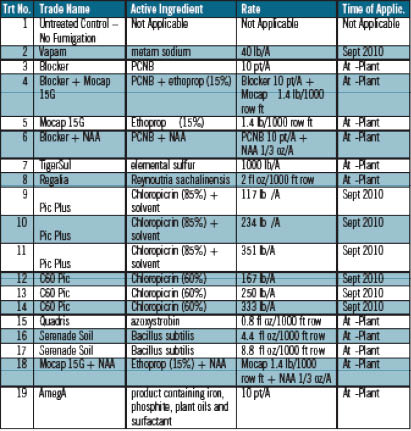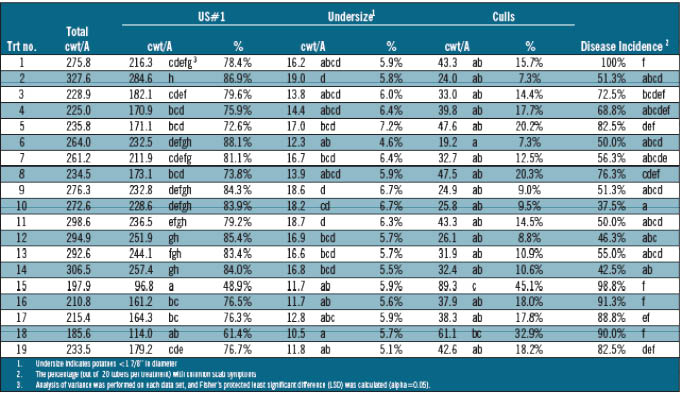 A trial was established May 22 at the Langlade County Research Area, Antigo, Wis., to evaluate fungicide and fumigation efficacy for control of potato common scab.
A trial was established May 22 at the Langlade County Research Area, Antigo, Wis., to evaluate fungicide and fumigation efficacy for control of potato common scab.
Approximately 2-oz seed pieces were cut mechanically on May 15 from U.S. No. 1 Yukon Gold tubers. Seed pieces were allowed to heal before planting. A randomized complete block design with four replications was used for the trial and treatment plots consisted of four 40-ft-long rows spaced 36 inches apart with 12-inch spacing in the row.
Fumigation treatments were applied in the fall of 2010. In-furrow chemical treatments were applied at planting. Furrows were mechanically covered using hilling disks. The soil type was Antigo silt loam and the field was maintained during the growing season according to standard grower practices.
To minimize soil compaction and damage to plants in rows used for foliar and yield evaluation, drive rows for pesticide application equipment were placed adjacent to plots. The center two rows of each plot were harvested September 17. Tubers were graded into U.S. No. 1, undersize and cull categories on September 23. After undersize tubers were graded out and tubers washed, but before scabbed tubers are removed, 20 tubers from each plot were chosen arbitrarily and assessed for scab incidence.
